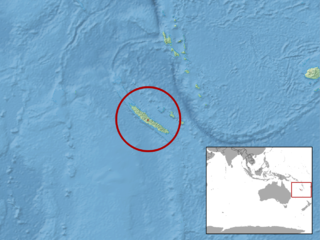
Bavayia is a genus of lizards in the family Diplodactylidae. Species in the genus Bavayia are also known commonly as New Caledonian geckos or bavayias. The genus is native to the remote New Caledonia and Loyalty Islands. The 12 species are moderately small to medium-sized geckos, and are distinguished from other genera by their tail length and the shape of their digits.
Caledoniscincus is a genus of lizards in the family Scincidae (skinks). The genus is endemic to New Caledonia.

Graciliscincus is a lizard genus in the family Scincidae. The genus is indigenous to New Caledonia.
Lioscincus is a genus of skinks, lizards in the family Scincidae. The genus is endemic to New Caledonia.
Nannoscincus is a genus of small skinks, lizards in the family Scincidae. The genus is endemic to New Caledonia.
Phoboscincus is a small genus of skinks, lizards in the family Scincidae. There are two known species in the genus Phoboscincus. Both species are found on various island of New Caledonia.

Mniarogekko chahoua is commonly known as the mossy New Caledonian gecko, short-snouted New Caledonian gecko, Bavay's giant gecko, or mossy prehensile-tailed gecko. It is an arboreal gecko found natively on the southern portion of the island of New Caledonia and on the outlying islands of Île des Pins.

The terror skink, also called commonly Bocourt's terrific skink, Bocourt's eyelid skink and Bocourt's skink, is a species of lizard in the family Scincidae. The species is endemic to the Île des Pins, a small islet off the coast of New Caledonia. First described in 1876, the species was presumed to be extinct, but was rediscovered in 1993, and since then several individuals have been seen. Because of its small area of occupation and small population size, the International Union for Conservation of Nature has assessed its conservation status as being "critically endangered".

Saiphos equalis, commonly known as the yellow-bellied three-toed skink or simply three-toed skink, is a species of burrowing skink found in eastern Australia. It is the only species classified under the genus Saiphos.

Geoscincus is a monotypic genus of skinks: the only accepted species is Geoscincus haraldmeieri.
Émile Deplanche was a French physician and naturalist.

Epibator is a genus of skinks endemic to New Caledonia.

Caledoniscincus chazeaui, also known commonly as Chazeau's litter skink, is a species of lizard in the family Scincidae. The species is endemic to New Caledonia.

Lioscincus steindachneri, also known commonly as the white-lipped forest skink or Steindachner's ground skink, is a species of lizard in the family Scincidae. The species is endemic to New Caledonia.
Slevin's elf skink, also known commonly as Slevin's dwarf skink, is an endangered species of lizard in the family Scincidae. The species is endemic to New Caledonia.
Phasmasaurus tillieri, commonly known as Tillier's maquis skink, is a species of lizard in the family Scincidae. It is endemic to New Caledonia.
Saproscincus challengeri, also known commonly as the Border Ranges shadeskink, Challenger's skink, the challenging shade skink, and the orange-tailed shadeskink, is a species of lizard in the family Scincidae. The species is native to New South Wales and Queensland in Australia.

Deplanche's shiny skink is a species of lizard in the family Scincidae. The species is endemic to New Caledonia.

Sigaloseps ruficauda is a species of skink found in New Caledonia.

The southern whiptailed skink is a species of skink found in New Caledonia. Tropidoscincus variabilis is a medium-sized, long-limbed and long-tailed skink with strong ontogenetic change in coloration. They are more brightly colored as juveniles. They live primarily in forests and heathlands. Mature males and females are roughly the same size, but females have longer bodies, shorter heads and limbs, and a less brightly orange venter. Females lay 2-4 eggs in summer, and young hatch in late summer. More than one year of growth is required to attain maturity. They eat a large variety of invertebrates, particularly spiders and crickets. Juveniles eat more spiders, bugs and isopods than adults.












